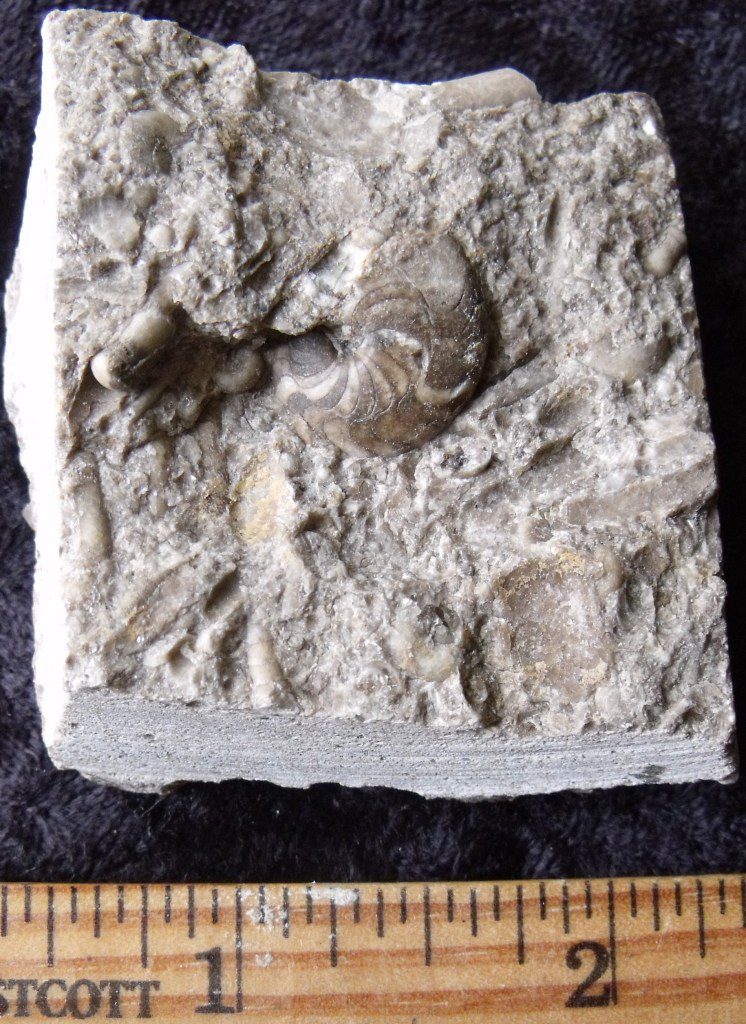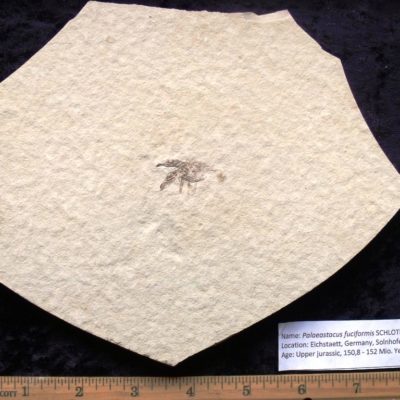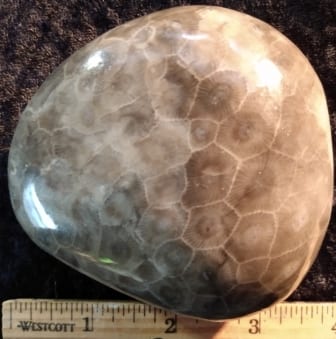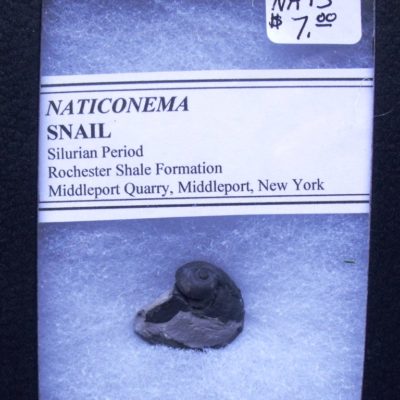Description
This Fossil is an Ammonoid Cephalopod. It is a Koenenites cooperi from the Devonian Deposits of Squaw Bay Limestone. This one has exceptional sutures.
This is an Ammonoid, not an Ammonite. Ammonoids are the predecessors of the more famous Ammonites.
A wonderful example of this Koenenites Cephalopod Fossil 8. But there is a bonus. On the piece there are also examples of Bactrites. The Bactrites was an animal that gave rise to the Belemnites of later periods.
These Fossils were found in the Lower Devonian formation known as the Squaw Bay Limestone. And this formation is found in Alpena, Michigan. Because these fossils are coiled and exhibit suture lines they are often mistaken for Ammonites. This specimen does exhibit some of the suturing common in these fossils. But the external shell is not present. Along with this Koenenites Cephalopod Fossil 8 there are also straight cephalopods on the block. The Squaw Bay Limestone is a very hard rock and when it splits there is not much preparation needed for the fossil.
The creature is related to the modern day octopus but then they had a hard external shell. However the octopus of today has lost their shells. The Koenenites also had tentacles with which it captured it’s food.
This Koenenites is 1/2 inch long and sits on an irregular matrix that is 2 by 1 3/4 inches.




